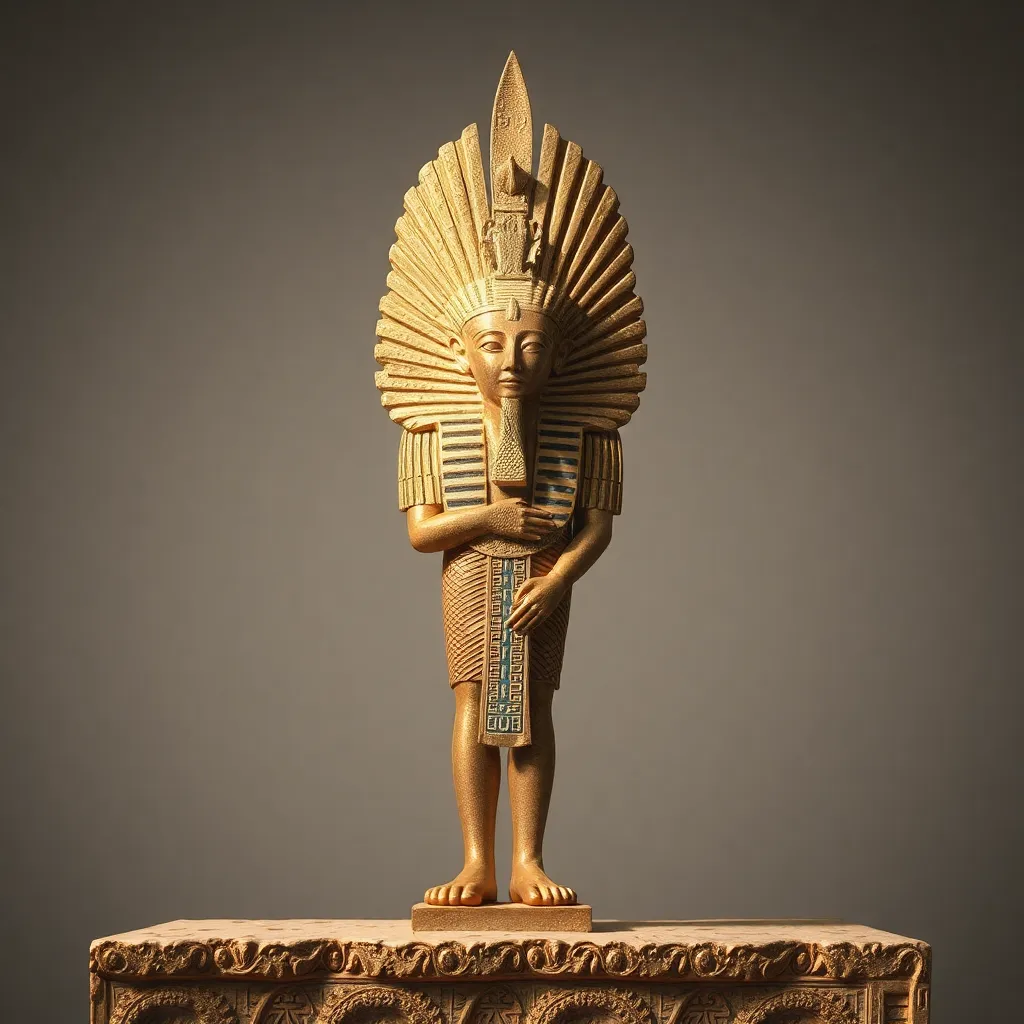The Aten and the Concept of Divine Intercession in Worship
I. Introduction
The Aten is a significant entity in Ancient Egyptian religion, often associated with the sun and represented as a solar disk. This deity played a crucial role during the reign of Akhenaten, who elevated the Aten as the central figure in a monotheistic worship system.
Divine intercession in worship refers to the practice of invoking deities to mediate on behalf of worshippers, providing a bridge between the human and the divine. This concept was foundational to Ancient Egyptian religious practices and reflects the complexities of their spiritual life.
Understanding the Aten and the concept of divine intercession is essential for grasping the historical and cultural dynamics of Ancient Egypt, particularly during the transformative period of the New Kingdom.
II. Historical Background of the Aten
The worship of the Aten has its origins in the early dynastic periods of Ancient Egypt, but it gained prominence during the reign of Akhenaten (circa 1353-1336 BCE). Akhenaten, originally named Amenhotep IV, introduced a radical shift in religious practices by promoting the Aten as the sole deity of worship, effectively diminishing the roles of other gods.
Key figures in Aten worship, particularly Akhenaten, played a pivotal role in its development. Akhenaten’s establishment of the city of Akhetaten (modern-day Amarna) as a center for Aten worship marked a significant departure from traditional polytheistic practices.
This shift from polytheism to Atenism represented a major theological and cultural change, as the Egyptians had long venerated a pantheon of gods and goddesses.
III. Theological Foundations of the Aten
The Aten is characterized as a solar deity, embodying the life-giving and sustaining qualities of the sun. Unlike many other deities in the Egyptian pantheon, the Aten was not anthropomorphized but represented as a radiant disk emitting rays that often ended in hands, symbolizing its nurturing aspect.
The relationship of the Aten with other deities was complex. While Akhenaten promoted the Aten as the exclusive god, traditional deities were still acknowledged in various cultural contexts, indicating a tension between old beliefs and new reforms.
Symbolism and iconography associated with the Aten include:
- The sun disk itself, which was often depicted in art.
- Rays of light, symbolizing the Aten’s life-giving force.
- The ankh, representing life, often shown being offered by the Aten’s rays.
IV. Divine Intercession in Ancient Egyptian Beliefs
Divine intercession in Ancient Egypt involved the practice of calling upon gods to intercede on behalf of individuals or the community. This role was vital in maintaining harmony and favor with the divine.
Compared to other Ancient Near Eastern religions, the concept of intercession in Egyptian beliefs was distinctive in its emphasis on the relationship between deities and the pharaoh, who was seen as a mediator between the gods and the people.
The importance of intercession in worship practices included:
- Rituals performed by priests to solicit divine favor.
- Personal prayers and offerings made by lay worshippers.
- Ceremonies intended to honor the gods and seek their protection.
V. The Role of Priests and Worshippers in Aten Worship
The High Priest of the Aten held a significant position, responsible for conducting rituals and maintaining the temple dedicated to the Aten. This role included:
- Overseeing daily offerings and ceremonies.
- Interpreting the will of the Aten for the people.
- Ensuring that the worship practices aligned with Akhenaten’s religious reforms.
The lay worshipper’s relationship with the Aten was characterized by personal devotion and participation in communal rituals. Worshippers were encouraged to express their faith through prayers, offerings, and participation in festivals.
Rituals and practices of Aten worship often included:
- Daily offerings of food and incense.
- Celebrations during solar festivals.
- Prayers for health, prosperity, and protection.
VI. The Impact of Aten Worship on Egyptian Society
The worship of the Aten had profound religious, political, and cultural implications during Akhenaten’s reign. It challenged the established religious order, leading to significant changes in temple practices and societal norms.
Reactions from traditional religious institutions were mixed. Many priests and followers of the old gods resisted the changes, leading to societal friction and conflict.
The legacy of Aten worship post-Akhenaten was equally significant, as subsequent pharaohs attempted to restore the traditional pantheon, often erasing Akhenaten’s innovations from historical records.
VII. Modern Interpretations and Academic Perspectives
Archaeological discoveries related to Aten worship, including temples, inscriptions, and artifacts, have provided valuable insights into this unique period of Egyptian history. These findings have led to a reevaluation of Akhenaten’s reign and its impact on subsequent religious developments.
Contemporary views on divine intercession highlight its relevance in understanding ancient belief systems and their influence on modern spirituality. The concept continues to resonate in various forms across cultures today.
The Aten has also found a place in popular culture and modern spirituality, often symbolizing enlightenment and the quest for higher knowledge.
VIII. Conclusion
In summary, the Aten and the concept of divine intercession represent a fascinating chapter in the history of Ancient Egyptian religion. The theological foundations, historical context, and cultural implications of Aten worship provide a rich field for exploration.
The lasting influence of the Aten and the practice of divine intercession in worship continue to inspire both academic study and personal exploration of spirituality.
Future directions for research may delve deeper into the intersections of religion, politics, and culture in Ancient Egypt, as well as the ongoing relevance of these ancient beliefs in today’s world.




